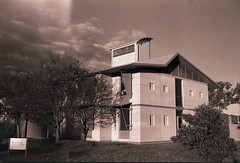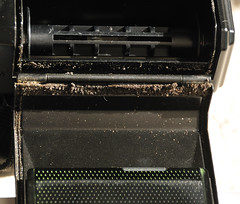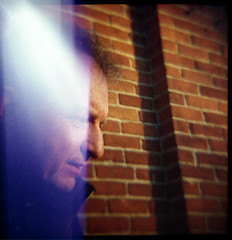Difference between revisions of "Light leaks"
(fixed typo (have added text and images a moment ago)) |
m (added cross-link) |
||
| Line 7: | Line 7: | ||
* poor manufacturing standards, as in the case of the [[Diana]]. | * poor manufacturing standards, as in the case of the [[Diana]]. | ||
| − | In addition, apparent light leaks can occur among some older Soviet cameras, such as the [[Lubitel]] and the [[Sputnik]] because the inside of the [[Glossary |film/exposure chamber]] lacks a coating that acts as a light baffle (the inside is comprised of untreated, shiny Bakelite allowing the light beams to bounce around). | + | In addition, apparent light leaks can occur among some older Soviet cameras, such as the [[Lubitel]] and the [[Sputnik]] because the inside of the [[Glossary |film/exposure chamber]] lacks a coating that acts as a light baffle (the inside is comprised of untreated, shiny [[Bakelite]] allowing the light beams to bounce around). |
Revision as of 23:08, 20 February 2011
A light leak is any light - other than that focused through the lens - that gets inside the camera body. Light leaks can spoil film while it is in the camera.
Light leaks generally show up as bright streaks or fogging on film, and are often due one or more of the following:
- the deteriation of foam seals around a film door on older cameras.
- the deteriation of foam seals around the dark-slide slot on medium format.
- cracks or pin holes in the bellows of folding cameras
- poor manufacturing standards, as in the case of the Diana.
In addition, apparent light leaks can occur among some older Soviet cameras, such as the Lubitel and the Sputnik because the inside of the film/exposure chamber lacks a coating that acts as a light baffle (the inside is comprised of untreated, shiny Bakelite allowing the light beams to bounce around).

|
| Example of light leaks caused by pinholes in the bellows image by Dirk HR Spennemann (Image rights) |

|
| Example of light leaks caused by decayed foam seals note the streak on the top left image by Dirk HR Spennemann (Image rights) |

|
| Example of decayed foam seals causing the light leak shown at left image by Dirk HR Spennemann (Image rights) |

|
| Light-struck frame from a Diana-type camera. image by Voxphoto (Image rights) |
Glossary Terms